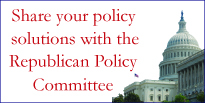RPC Reg Spotlight April 26, 2012
Regulatory Action in the Spotlight:
OSHA’s final rule on Hazard Communication Standards
Adverse Effects:
- Rule will produce uncertainty among businesses.
- Alters previously uncontroversial matter into contentious rule.
Response of the Obama Administration:
On March 26, 2012, the Occupational Safety and Health Administration (OSHA) unveiled a rule (RIN: 1218-AC20) which modified its Hazard Communication Standard to “conform to the United Nation’s Globally Harmonized System of Classification and Labeling of Chemicals (GHS).” This regulation requires companies or entities working with or manufacturing particular hazardous materials to alter their existing system of classifying and labeling such hazardous products. The rule revises criteria for classification of hazardous materials, amends the labeling of hazardous materials, sets new standards for safety data sheets, modifies standards for flammable and combustible liquids, and establishes new training criteria. Additionally, this rule creates a new category of “hazards not otherwise classified” which, as described in the regulation language, means “an adverse physical or health effect identified through evaluation of scientific evidence during the classification process that does not meet the specified criteria for the physical or health hazard classes.”
After revisions, this final rule has an estimated compliance cost of $4.05 billion and predicted paperwork hours of 11.3 million hours, which is a net change of $2.08 billion in additional costs and 9.2 million extra paperwork hours when compared to the proposed rule.
Impact on the United States:
The U.S. Chamber of Commerce has registered a number of complaints regarding this regulation, fearing it will bring a great deal of uncertainty to businesses. On February 10, 2011, before the final rule was unveiled, the Coalition for Workplace Safety (CWS) and a group of forty associations wrote a letter to Cass Sunstein, Administrator for Office of Information and Regulatory Affairs at the Office of Management and Budget (OMB). In this letter, CWS, while supporting “the goals of this rule” and agreeing that “creating a unified systems of labels and hazard warnings will be beneficial to producers and manufacturers,” outlines their concerns regarding the creation of the “unclassified hazard” category and OSHA’s attempt to tie combustible dust to the “unclassified hazard” category. Unless these concerns were addressed, the letter states that “the benefits of this rule will be outweighed by the burdens, complications, and uncertainties that will flow from these provisions.” The final rule did not address the concerns laid out in the CWS letter significantly, other than changing the term “unclassified hazard” to “hazards not otherwise classified.”
In an article from March 28, 2012, entitled “Five Myths About OSHA’s New Hazard Communication Regulation,” Marc Freedman writes about the flaws in the way OSHA has designed this rule. He specifically singles out the “hazards not otherwise classified” category, writing, “Producers of covered chemicals and users of these chemicals will now have to divine what other hazards OSHA will expect them to cover…This uncertainty means they will never know when they have satisfied the requirements of this regulation.” He also writes about the difficulty defining the component of combustible dust: “Combustible dust is a complex, site specific hazard and is not intrinsic to any specific substance; several conditions must occur simultaneously for the hazard to exist. There is no OSHA standard regulating combustible dust, nor is there a precise definition… Producers will now have to determine what conditions downstream could lead to a chemical producing a combustible dust hazard.”
In Closing:
In determining the cost of this regulation, OSHA wrote: “These estimates are for informational purposes only and have not been used by OSHA as the basis for its decision concerning the requirements for this final rule.” Therefore, this rule is anathema to President Obama’s Executive Order 13,563, “Improving Regulation and Regulatory Review,” which said “each agency must… adopt a regulation only upon a reasoned determination that its benefits justify its costs.” Though this regulation initially had broad support, and was first conceived in the Bush administration, OSHA’s decision to add imprecise and unclear provisions, such as the “hazards not otherwise classified” category and the combustible dust stipulation, while ignoring an Obama Executive Order regarding regulatory cost-benefit analyses, has increased uncertainty and brokered controversy.
Relevant Legislation:
The Subcommittee on Workforce Protections has held two hearings on OSHA and its regulations in the 112th Congress. The first hearing was entitled “Investigating OSHA’s Regulatory Agenda and Its Impact on Job Creation” and was held on February 15, 2011, while the second hearing, “Is OSHA Undermining State Efforts to Promote Workplace Safety?,” was held on June 16, 2011. At the February 15, 2011 hearing, Rep. Tim Walberg said, “Worker safety is a priority, and so too is promoting policies that will allow businesses to grow and hire new workers. Needless rules and onerous regulations are often roadblocks to economic growth and job creation.”

